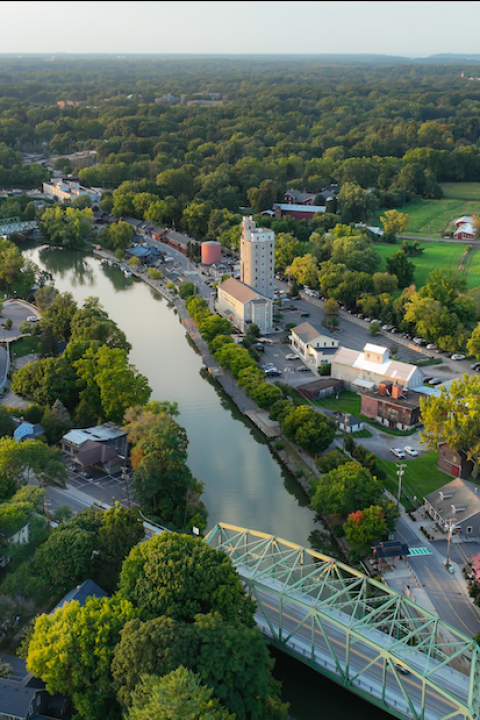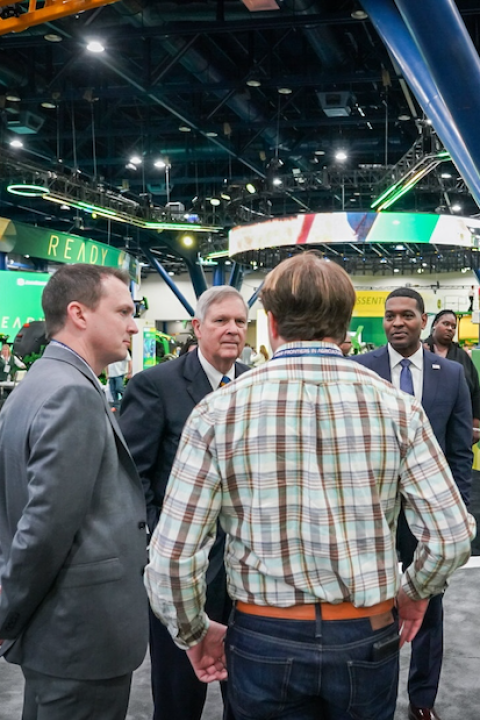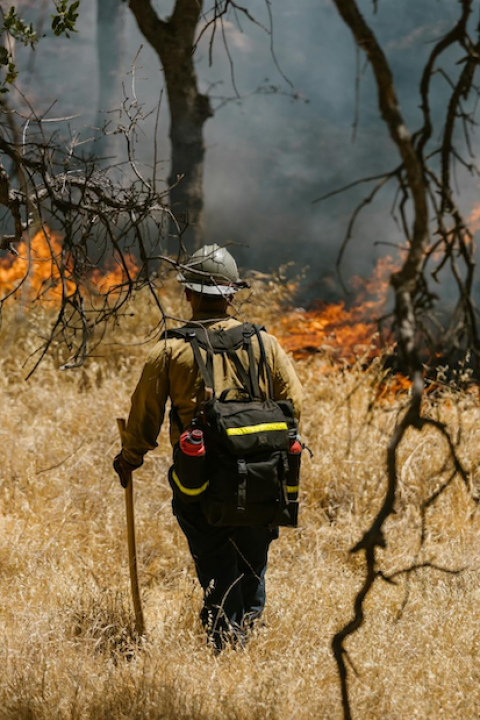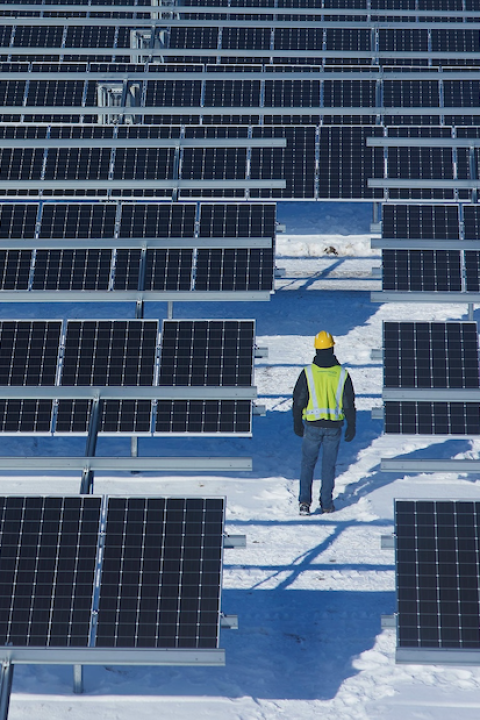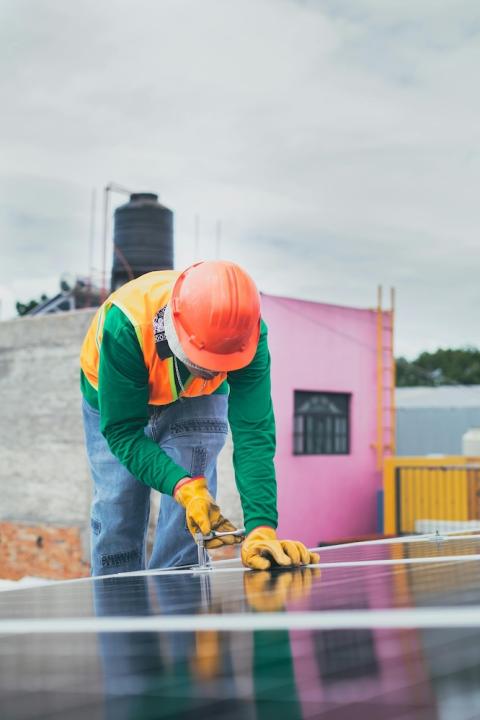
Technician on his high post repairing an electrical pole at the Burgos Wind and Solar Farm, Ilocos Norte, Philippines. (Image: Asian Development Bank/Flickr)
The American Council on Renewable Energy (ACORE) is among the U.S. organizations recognizing that a diverse workforce is a valuable asset in today’s economy. Encouraging diversity hiring among clean energy employers is just one avenue for progress, though. ACORE has gone to the next level by launching an outreach effort aimed at including more women- and minority-owned firms in its powerful network. The results are already successful, and somewhat surprising, too.
The clean energy sector has a diversity problem
There is ample statistical evidence of the bottom-line benefits of a diverse workforce. “Companies in the top quartile for racial diversity are 36 percent more likely to financially outperform those in the bottom quartile,” according to an analysis from the consulting firm McKinsey and Company.
In terms of diversity in the U.S. energy sector overall, a significant decline in the male-dominated coal industry has had the ripple effect of improving the profile of other energy sectors in recent years, according to the U.S. Department of Energy’s latest annual report on energy employment.
Energy analysts also observed that the oil, gas and coal industries are losing workers to new clean energy companies, which attract a younger — and presumably more diverse — hiring pool. Nevertheless, the U.S. energy industry overall continues to resist diversification, and the clean energy sector is no exception.
Drawing from statistics compiled by the Energy Department, in September of 2021 the clean energy organization E2 observed that clean energy employment is still “dominated by white men.”
“Black and Hispanic/Latino workers are more poorly represented in clean energy than they are across the rest of the economy, with Black people composing 8 percent of the clean energy workforce (compared with 13 percent economy-wide) and Hispanic/Latinos making up 16.5 percent (versus 18 percent economy-wide),” according to E2. “Women represent less than 30 percent of all workers in the sector despite accounting for nearly half (48 percent) of the U.S. labor force as a whole.”
Diversity in the energy industry is more than a workforce issue. As underscored by the environmental justice policies of President Joe Biden, when communities lack influence they are all the more likely to be saddled with the negative environmental, economic and public health impacts of industrial development.
Those impacts are also evident in the low rate of clean technology of adoption among low- and middle-income households, including rooftop solar panels, heat pumps and electric vehicles.
Supporting the energy transition with diversity programming
ACORE was founded in 2001 to unite leading U.S. energy stakeholders in supporting the transition into a more sustainable energy profile. The organization is a financial powerhouse, with membership collectively holding more than $22 trillion in assets. “In 2022, more than 90 percent of the booming utility-scale U.S. renewable growth was financed, developed, owned or contracted for by ACORE members,” according to the organization.
In 2020, ACORE launched its new Accelerate Membership Program to expand beyond this utility-centered approach and address disparities in clean technology adoption. The initiative grew out of a desire among members to accomplish meaningful progress on diversity and equity rather than simply signing onto new pledges.
Launched in 2021 with an initial cohort of 10 diverse companies, it provides access to ACORE’s network and resources, for women- and minority-owned businesses that are dedicated to solving problems within their communities.
The program supports businesses that seized opportunities to satisfy the unmet demand for new technologies within their communities, Constance Thompson, the senior vice president of diversity, equity, inclusion, and justice at ACORE, told TriplePundit. These business leaders represent the diverse races, ethnicities, genders and countries of origin of their communities, but their work is unrecognized by larger stakeholders.
“They are innovating at the ground level while those who have been established in the space are like ‘Who are you?’” Thompson explained.
That is beginning to change as new state and federal policies provide more support for renewable energy projects that reach low- and middle-income households. Thompson also credits the Inflation Reduction Act (IRA) with jolting the big stakeholders into an awareness that they can, and should, learn from diverse stakeholders who work on the community level.
“When you talk about implementing the IRA, those benefits are aimed at smaller companies,” she said. “The bigger companies are having to look at them and learn from them.”
“Many of these large developers and technology innovator companies are having to learn about sharing power, how to respect the technology but also understand that the small business person knows finance, knows how to do deals,” Thompson added.
Doing business from the inside out, together
Since 2021, the Accelerate Membership Program has enrolled 31 members in three cohorts. The companies represent a cross-section of mainstream clean energy activities ranging from carbon offsets, renewable energy credits, and environment, social and governance (ESG) consulting services to energy efficiency upgrades, electric vehicle charging, and community solar projects.
Over and above supporting community-level clean energy enterprises, the program also yielded at least one important new insight for ACORE members. Smaller clean energy companies are collaborating with each other — under the radar — on supply chain development, financing and other key elements of business.
“They are working with one another … in their communities and the larger market,” Thompson told 3p. “They are redefining economic and restorative justice.”
All hands on deck for clean energy
ACORE partners with other organizations to help accelerate diversification in the clean energy workforce. One example is a workforce program run by the Black Owners of Solar Services in North Carolina, Thompson said.
“It’s becoming an amazing example of leveraging all hands on deck for solar … These are farmers, people of color, women who inherited this land,” she said. “It’s allowing individuals to become part of this renewable energy transition process.”
In addition, Thompson emphasizes the need for an all-hands-on-deck effort to grow the clean energy workforce. That includes working with utilities and streamlining the skills transfer pathway from fossil fuel energy to the clean energy sector, as well as engaging immigrants, re-entry individuals and other underrepresented populations.
“We’re all on this little rock together, and it will go away if we don’t do the right thing,” she said. “I really want to stress that from an equity and inclusion standpoint, it’s going to take all of us. We have to work to eliminate the barriers of fear and purposeful exclusion.”
The politically fraught movement against ESG still poses a barrier, but as demonstrated by the ACORE Accelerate Membership Program, grassroots pressure — from business as well as environmental advocates — continues to push the energy transition forward.

Tina writes frequently for TriplePundit and other websites, with a focus on military, government and corporate sustainability, clean tech research and emerging energy technologies. She is a former Deputy Director of Public Affairs of the New York City Department of Environmental Protection, and author of books and articles on recycling and other conservation themes.



